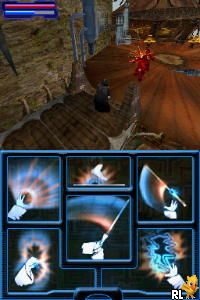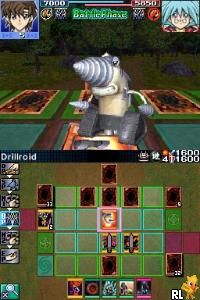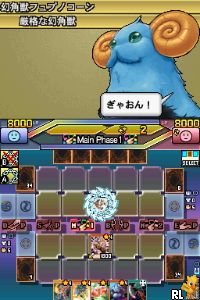Dec 16, 2016 Go for site Play classic video games on your computer or mobile device You can download each and every rom for any console.
If you're thinking about your childhood games on Atari, ColecoVision, or that old Commodore 64, you can relive those memories with retro gaming on your Mac. You're going to need some emulation software to help you get started. Our favorite emulation software comes from OpenEmu and we'll show you how to get it up and running.
What is OpenEmu
OpenEmu is a free (you can donate if you like their software) and open source graphical front end for many software emulators (which in turn are also open source). OpenEmu makes it exceedingly easy to get you up and running your favorite older generation titles from a multitude of systems such as Atari, Nintendo, Sega and even arcade systems.
OpenEmu features
OpenEmu allows for simple set up. You just need to download the installer, choose the emulators you want to freely download, and then drag and drop your saved titles to the program window. It automatically organizes the titles into the various systems that they were created for and makes it easy for you to configure keyboard, gamepad, and joystick controller inputs.
Getting OpenEmu
OpenEmu comes in two flavors. Press Pack and an OpenEmu Experimental Press Pack. The only difference as far as I can tell is that the Press Pack is lacking support for the M.A.M.E., which is arcade machine emulation software.
What is M.A.M.E.
For simplicity's sake, I'll define M.A.M.E. as an archive of the vintage software that runs arcade systems from yesteryear. The developers try their best to recreate the software systems that ran/run on arcade based computers and do so strictly via CPU emulation for that purpose. The developers avoid using GPU acceleration for the emulation because the actual running of the software is simply an aside to the purpose of their mission. As a result, if you want to run some older arcade games, aside from having an authentic arcade CPU board, your best option would be the M.A.M.E. project.
Here's how to get the full M.A.M.E. enabled version of OpenEmu.
- Head to OpenEmu.org.
Click the Download Now button
Source: iMore
- Click Allow when prompted to allow OpenEmu to be downloaded onto your Mac.
When the download is complete, the OpenEmu icon will appear on your desktop.
Running OpenEmu for the first time
Upon launching OpenEmu the first time, you'll have to allow your Mac to run software from an unidentified developer and choose the emulators you want to download and run.
- Double-click on the OpenEmu icon on your desktop.
Close the warning pop-up telling you the app can't be opened by clicking Cancel.
Source: iMore
- Click on the Apple icon in the upper-left corner of your Mac's screen.
Click on System Preferences.
Source: iMore
- Click on Security & Privacy.
- Navigate to the General tab.
Click the lock in the bottom left corner of the Security & Privacy window.
Source: iMore
- Enter your System Administrator password.
- Click Unlock
Click Open Anyway under Allow apps downloaded from. OpenEmu will open immediately, and so will another warning.
Source: iMore
- Click Open System Preferences when prompted to allow OpenEmu to receive keystrokes from any application.
- Close the OpenEmu program at this time.
- Click the lock in the bottom left corner of the Security & Privacy window when it pops up.
Enter your System Administrator password.
Source: iMore
- Click Unlock
- Tick the box next to OpenEmu to allow it to monitor inputs from your keyboard even while using other apps.
Click the lock in the bottom left corner of the window to prevent further changes.
Source: iMore
Running the OpenEmu startup wizard for the first time

- Launch OpenEmu on your Mac.
- Click Next on the welcome screen.
- Select or de-select any and all emulator cores you want to be able to download and use.
- Click Next.
Click Go to begin your adventure!
Source: iMore
Installing games
Installing games is as easy as a drag and drop of the game files you own. Games will magically be placed into their correct system heading automatically.
- Open Finder.
- Find your game ROM.
- Drag your game ROM into the OpenEmu window.
- Done.
Configuring inputs
As with everything else in OpenEmu, configuring your input devices is supremely easy.
Openemu Mac Games Download Full Version

- In OpenEmu, go to Preferences.
- Tap Controls.
- Choose the system you wish to edit controls for. Having a similarly shaped gamepad makes it that much easier.
Click the control you want to edit and then tap the button, or keyboard input you want to map it to.
Source: iMore
- Complete all of the inputs as you desire.
Playing games
- Find the system for which you installed the game.
- Double-click the title.
- Play.
Games? What games?
I purchased an X-Arcade Tankstick with trackball from Xgaming, and that purchase gave me over 200 arcade games that I can legally enjoy. M.A.M.E. also has an archive of free to download and play full-fledged arcade ROMS. On top of that you can also find a number of homebrew developers that have built and still build new games for the various emulated home consoles.
Final thoughts
I love gaming. Yes, even gaming on Mac (maybe especially so). I'm also set up for VR gaming on my MacBook pro connected eGPU. But I'll always have a soft spot for the older arcade titles from my youth. That's why I love OpenEmu. I can simply get right into the action without worrying about configuration. What emulator do you use for your retro gaming? Let us know in the comments!
Updated February 2020: Updated with steps for macOS Catalina's security workaround.
macOS Catalina
Main
Concepts everywhere
Another day, another iPhone 12 Pro concept. How much would you pay?
If reports are accurate we might be waiting a little while longer than normal for iPhone 12 Pro. But would you care if it looked like this?
Help
Getting Started
Compressed archives (such as .rar, .zip, .7z, etc) are NOT supported for CD-based games — you must uncompress them first.
Importing
Dumped copies of CD-based games must be loaded in with Cue sheets or CloneCD files only.
Simply drag and drop a .cue or .ccd file into your library and OpenEmu will add all associated files along with it from the same folder. If a game is made up of multiple discs, please follow the multi-disc guide instead.
Please make sure you are importing valid files by carefully reading the sections below.
Supported Formats
PC Engine CD/TurboGrafx-CD, PC-FX, PlayStation, Sega Saturn (using Mednafen)
- CUE+BIN, both single and multiple .BIN tracks
- CUE+IMG, CUE+ISO
- CUE + BIN/IMG/ISO + CDDA tracks with WAV/OGG/FLAC. MP3 is NOT supported.
- CloneCD CCD+IMG+SUB
Mega CD/Sega CD (using Genesis Plus GX)
- CUE+BIN, CUE+IMG, CUE+ISO
- CUE + BIN/IMG/ISO + CDDA tracks with WAV/OGG. MP3 is NOT supported.
Cue Sheets
A cue sheet is a plain text file with a .cue extension containing metadata used to describe the layout of a CD, normally accompanied by one or more data files dumped from the original disc.
Below demonstrates how a cue sheet could be written for a PlayStation game with CDDA, depending on how it was dumped.
Single binary track
Single binary track — pregap length and subcode flags
Single binary track — pregap start time with INDEX 00
Multiple binary tracks. Data track + separate file for each audio track (common with Redump)
Single binary track with WAVE audio track file
How to Dump a Physical CD
Try Redump's CD dumping guide.
Help
Q. My cue sheet or CCD won't import
It is important that cue sheets are saved as plain text, without 'smart quotes' or 'smart dashes' and that tracks do not contain hardcoded paths, only filenames.
Open your cue sheet in TextEdit or another plain text editor and verify that the filename for BINARY:
- matches the filename of your
.bin/.img/.isofile and is in the correct case - has an extension:
FILE 'CASTLEVANIA.BIN' BINARYand NOTFILE 'CASTLEVANIA' BINARY - does not contain a hardcoded path:
FILE 'C:WINDOWSDESKTOPCASTLEVANIA.BIN' BINARY
If using a CloneCD .ccd, you must also have a .img and .sub with matching filenames.
Q. I have no music at all, only sound effects most of the time
It means you have a bad dump or the cue sheet is missing correct CDDA track information. There is no solution but to obtain a proper dump.
Q. I only have a single .BIN or .ISO file
It is strongly recommended to simply obtain another dump that is packaged properly.
This is considered a bad/incomplete dump. It is necessary your game dump has an associated cue sheet because they are used to describe data and audio for the disc. Attempting to create your own without knowing the layout of the disc and how it was dumped, especially for a game that uses CD Audio (CDDA), will only result in problems.
Q. I have a multi-disc game
You need to create a .m3u file containing the filenames of all the cue sheets for the game. The file must be saved in a folder together with all the cue sheets and their associated files in order for them to be automatically imported. Also, the cue sheets for the game must not already be pre-imported in your library. Note: Mega CD/Sega CD is not supported.
Example:
You have a multi-disc game such as Chrono Cross with two cue sheets
Chrono Cross (USA) (Disc 1).cueandChrono Cross (USA) (Disc 2).cue.Now create a
.m3ufile by opening up your favorite plain text editor and copy and pasting the filenames of your cue sheets, one per line appearing as:
Note: For CloneCD rips, only add the .ccd filenames to the .m3u file.
Mac Openemu
IMPORTANT — Save the file as plain text (if using TextEdit, select 'Make Plain Text' from the Format menu) with a .m3u extension, for example
Chrono Cross (USA).m3uImport only the
.m3ufile into your library as normal and the cue sheets will be automatically imported. It will appear in your PlayStation library and you can load it.
Now, when you reach a point in-game where you must swap discs, select the required disc from the HUD control bar 'Select Disc' menu like so:
Q. I have an .ECM or .APE file
Dumps with .ecm and .ape are compressed data and audio tracks. These files must be uncompressed before they can be used.
Our example will use a cue sheet named Castlevania - Symphony of the Night (USA).cue with the contents and files:
ECM
The .ecm file must be decoded and renamed to match the BINARY track filename from the cue sheet.
- Download unecm (via the Command-Line Pack v1.03 by Neill Corlett)
- Uncompress cmdpack-1.03-macosx-x86_64.tar.gz and copy the
unecmfile to the same folder as your game with the.ecmfile
- If you have the Homebrew package manager, you might also use
brew install ecm
Open your cue sheet in TextEdit or another plain text editor and notice the filename of the
BINARYtrack and also the.ecmfilename in your folder. e.g.Castlevania - Symphony of the Night (USA) (Track 1).binanddata.bin.ecmNavigate to your game's folder in Terminal. Follow guides here or here to do this.
Decode your
.ecm. In Terminal, enter the following command and press enter, making sure to add the correct filenames:./unecm 'data.bin.ecm' 'Castlevania - Symphony of the Night (USA) (Track 1).bin'
APE
The .ape file must be converted to PCM and renamed to match the AUDIO track filename from the cue sheet.
- Download X Lossless Decoder (XLD)
- Open XLD.app — the application is not signed, so you must right click and select Open
- Go to XLD > Preferences menu and set the Output format to PCM (little endian)
- To convert your file, just click on Open from the File menu, and navigate to your
.apefile - The converted file will be named, for example,
Castlevania - Symphony of the Night (USA) (Track 2).pcmwhich must then be renamed - To rename, right click on the
.pcmfile and select Get Info. From the Name & Extension section, change the file extension from.pcmto match the corresponding audio track inside the cue sheet, presumably.bin, resulting inCastlevania - Symphony of the Night (USA) (Track 2).bin
Q. I have a .CHD file from Archive.org
Some CD dumps are stored in a MAME/MESS-specific format capable of multiple layers of compression (LZMA/zlib/FLAC/Huffman) called CHD (Compressed Hunks of Data or Compressed Hard Disk images), containing a .cue and .bin file. These files must be uncompressed with chdman before they can be used.
Download and install the SDL2 framework for OS X.
Download a pre-compiled version of MAME or MESS 64-bit (x86_64) from SDLMAME
Uncompress the
.zipfile and copy thechdmanfile found inside the 'tools' folder to the same folder as your game with the.chdfileNavigate to your game's folder in Terminal. Follow guides here or here to do this.
Extract your
.chd. In Terminal, enter the following command and press enter, making sure to add the correct filenames:./chdman extractcd -i 'sonic cd (usa).chd' -o 'sonic cd (usa).cue' -ob 'sonic cd (usa).bin'
Q. I have a .MDF and a .MDS file
These are an alternative format to iso/bin images created by some software like Alcohol 120%. They are very easy to convert into .bin/.cue.
Install a command-line tool named mdf2iso using either macports or homebrew.
$ brew install mdf2isoIn the directory with both .mdf and .mds files, run the following command to convert into .bin/.cue.
$ mdf2iso --cue name_of_file.mdfThis will generate compatible .bin/.cue files in the same directory, with the same name as the original image.
Q. I have a .SBI file
Hundreds of PAL region PlayStation games used LibCrypt, a copy protection mechanism that stored non-standard data in subchannels on the disc. If missing from a backup, this crippled games by disabling input (Ape Escape), impossible difficulty (Lucky Luke: Western Fever), mysterious bugs (Spyro: Year of the Dragon) or freezing at boot (Resident Evil 3: Nemesis) or during a level (Wip3out).
Dumped copies that use cue sheets require additional .sbi subchannel data files in order for these games to work.
Openemu Mac Games Download Freeware
Download .sbi files for affected games from redump.org by first choosing your game and then finding 'SBI subchannels' at the top of the page.
Drag and drop the .sbi to import it alongside your game. IMPORTANT — The .sbi file must be named exactly as the base filename of your cue sheet including case e.g.
Ape Escape (Europe).cueandApe Escape (Europe).sbiWip3out (Europe) (En,Fr,De,Es,It).CUEandWip3out (Europe) (En,Fr,De,Es,It).SBI
How To Download Openemu
Note: multi-disc games such as Final Fantasy VIII, Final Fantasy IX, Galerians and Parasite Eve II must have all .sbi files for each disc imported.